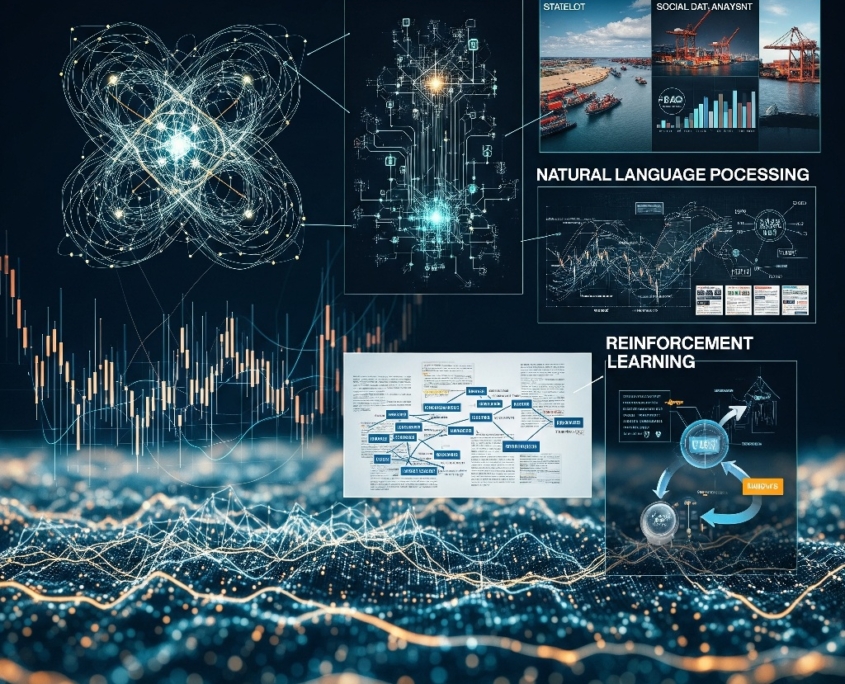Introduction
The quantitative finance landscape is undergoing a radical transformation as machine learning in quant funds evolves from experimental technology to core infrastructure. This seismic shift represents the most significant development in quantitative investing since the initial adoption of statistical models. AI and machine learning are not merely enhancing existing strategies but enabling fundamentally new approaches to market prediction, risk management, and portfolio construction that were previously impossible.
From Traditional Quant to ML-Driven Strategies
Traditional quantitative funds primarily relied on:
- Linear regression models
- Statistical arbitrage
- Factor-based investing
- Simple pattern recognition
Machine learning algorithms have introduced capabilities that transcend these limitations through:
- Non-linear pattern detection
- Adaptive learning from new data
- Processing unstructured data sources
- Complex relationship mapping across thousands of variables
Key Areas Where Machine Learning is Transforming Quant Funds
1. Advanced Pattern Recognition
Beyond Human Perception:
Machine learning algorithms, particularly deep learning neural networks, can identify complex, non-linear patterns across massive datasets that escape both human observation and traditional statistical methods.
Real-World Application:
- detecting subtle relationships between seemingly unrelated assets
- Identifying market regime changes before they become apparent to traditional models
- Recognizing patterns in high-dimensional data that humans cannot visualize
2. Alternative Data Processing
The New Alpha Source:
While traditional quant funds used structured financial data, ML-powered quant funds can extract signals from previously unusable unstructured data sources:
Data Types Being Leveraged:
- Satellite imagery (parking lot traffic, agricultural yields, shipping activity)
- Social media sentiment and natural language processing
- Credit card transaction data in near-real-time
- Geolocation data from mobile devices
- Corporate supply chain information
- Weather patterns and climate data
3. Natural Language Processing (NLP)
Quantifying the Unquantifiable:
NLP techniques allow quant funds to systematically analyze:
- Earnings call transcripts for sentiment and subtle cues
- Central bank communications and policy statements
- News articles and financial media
- Social media chatter and trending topics
- Regulatory filings and corporate documents

4. Reinforcement Learning
Self-Improving Trading Systems:
Reinforcement learning represents the cutting edge of AI in quantitative finance, creating systems that:
- Learn optimal trading strategies through simulation
- Adapt to changing market conditions without human intervention
- Continuously optimize execution strategies to minimize market impact
- Develop novel approaches that human researchers might not consider
5. Predictive Modeling Enhancement
Superior Forecasting Capabilities:
Machine learning models outperform traditional statistical methods in:
- Time series forecasting with complex seasonality
- Volatility prediction using multiple data streams
- Correlation forecasting during market stress
- Risk factor modeling with interacting variables
Real-World Examples of ML in Quant Funds
Two Sigma
- Uses machine learning to analyze thousands of data sources
- Employs natural language processing to quantify qualitative information
- Develops ensemble models that combine multiple ML approaches
Renaissance Technologies
- Reportedly uses pattern recognition algorithms inspired by speech recognition technology
- Processes massive historical datasets to identify predictive patterns
- Leverages ML for signal combination and portfolio construction
Citadel
- Invests heavily in ML research and development
- Uses machine learning for trade execution optimization
- Applies NLP to news and social media analysis
The Competitive Advantage of ML-Driven Quant Funds
Speed of Innovation
- Rapid iteration and testing of new hypotheses
- Automated feature engineering from raw data
- Ability to quickly adapt to new market conditions
Alpha Generation
- Discovery of previously undetectable signals
- Combination of weak predictors into strong signals
- Continuous improvement of existing strategies
Risk Management
- Early warning systems for regime changes
- Stress testing under previously unimaginable scenarios
- Real-time monitoring of portfolio risks
Challenges and Limitations
Data Quality Issues
- Garbage in, garbage out: ML models amplify data quality problems
- Cleaning and preprocessing alternative data remains challenging
- Survivorship bias in historical data can lead to flawed models
Model Risk
- Overfitting remains a significant concern with complex models
- Black box problem: difficulty interpreting why models make specific decisions
- Model drift: relationships that hold in training data may not persist
Computational Requirements
- Massive computing power needed for training complex models
- Data storage and processing infrastructure costs
- Specialized talent required for development and maintenance
Regulatory and Ethical Considerations
- Potential manipulation concerns with ultra-fast adaptive systems
- Data privacy issues with alternative data sources
- Transparency requirements conflicting with proprietary models
The Future of Machine Learning in Quant Funds
Next-Generation Developments
- Deep Reinforcement Learning: Fully autonomous trading systems
- Transfer Learning: Applying knowledge across different asset classes and markets
- Explainable AI: Solving the black box problem with interpretable ML
- Quantum Machine Learning: Potential integration with quantum computing
- Federated Learning: Training models across decentralized data sources
Democratization of ML Tools
- Cloud-based ML platforms reducing entry barriers
- Open-source libraries making advanced techniques accessible
- Automated machine learning (AutoML) simplifying model development
Conclusion: The Paradigm Shift
Machine learning is not just improving quant funds—it’s redefining what’s possible in quantitative finance. The transformation extends beyond incremental gains to enabling fundamentally new approaches to market participation. While challenges remain, particularly around model risk and interpretability, the directional shift toward ML-driven strategies is unmistakable and accelerating.
For investors, this revolution means both opportunity and complexity. The potential for improved returns comes with new risks and a greater need for sophisticated due diligence. For the industry, it represents a tectonic shift that will separate next-generation quant funds from those clinging to twentieth-century methodologies.
As machine learning capabilities continue advancing, the quant funds that successfully integrate these technologies while managing their risks will likely define the future of algorithmic investing.
Read more:
- Machine Learning for Finance (University of Oxford)
- Financial Machine Learning


